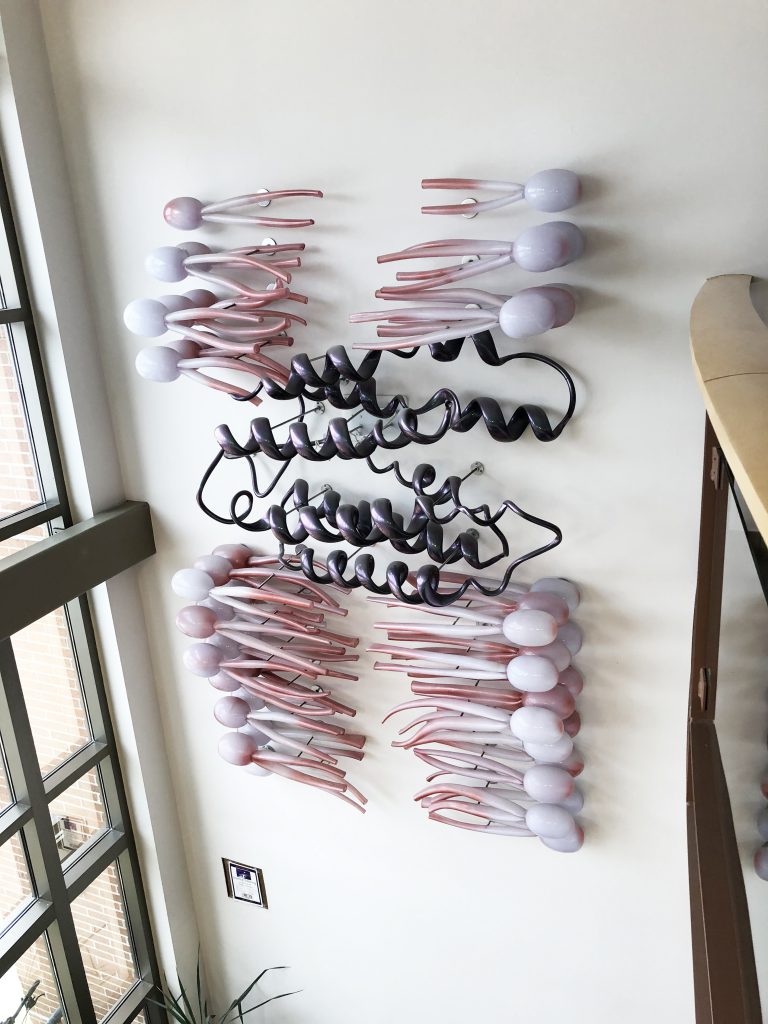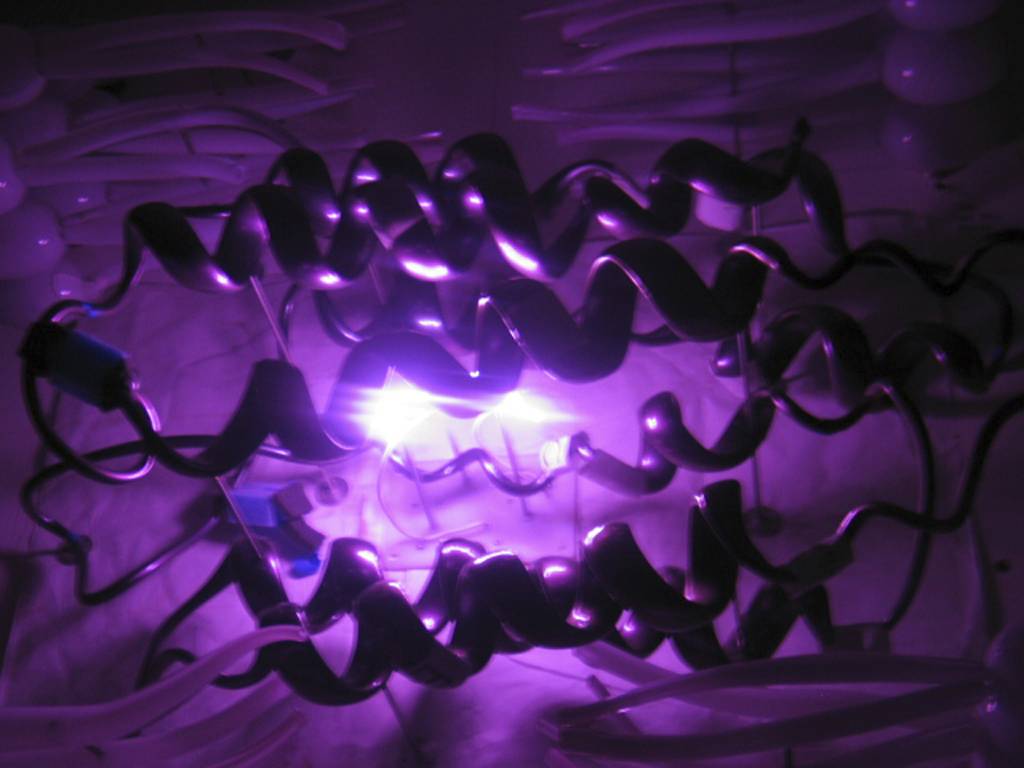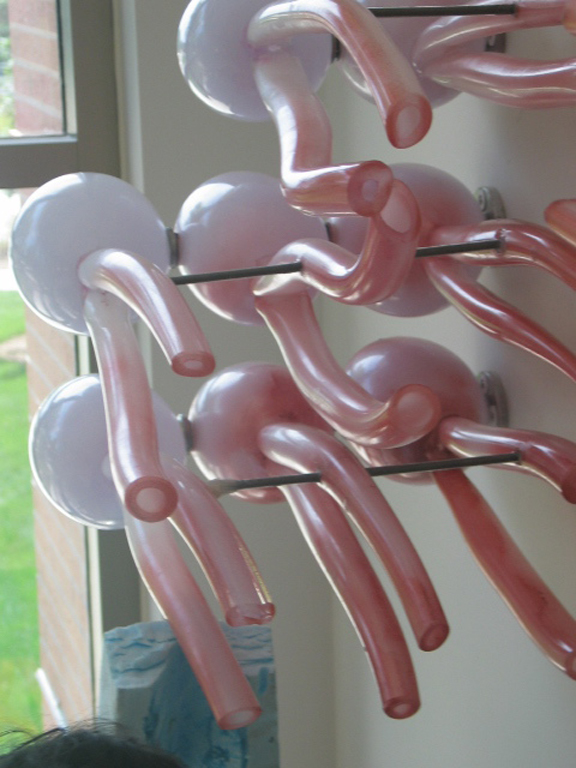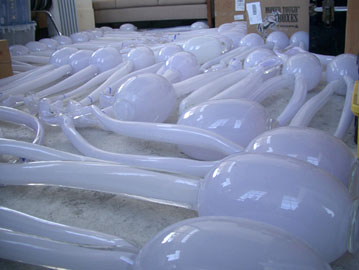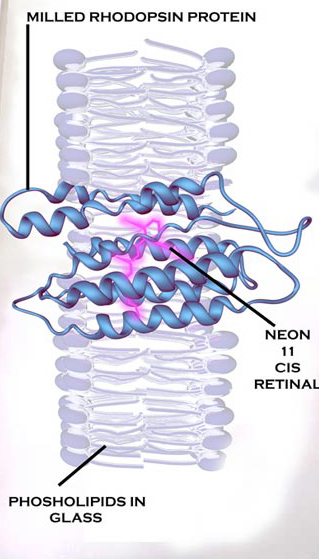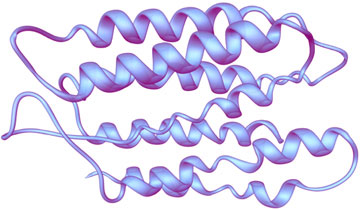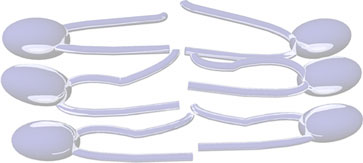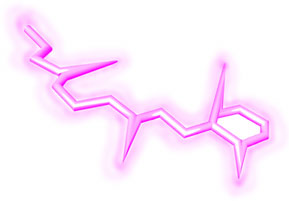Lipid Love Starring Rhodopsin as Visual Purple: (2004-2005) Was the winner of Iowa State Building Prize for 1% of building budget for the University of Northern Iowa McCollum Science Hall; a campus science building devoted to science education
This large-scale wall installation depicts the process by which we see in near darkness. The chromatophore in the rhodopsin protein is more sensitive to light than are those of other photoreceptors which enable color vision in brighter light. The rhodopsin protein in embedded in a lipid membrane that surrounds the nerve cells in the retina. Rhodopsin converts the energy of light to a chemical signal that sends message along the nerve fibers to the brain.
The sculpture depicts the relation of the rhodopsin protein to the lipid membrane. Rhodopsin is the member of a family of proteins that covert sensations such as light, heat, touch and sound to chemical signals that trigger cellular responses—the so called signal transduction family of proteins. This signal transduction proteins are important not only because they allow us to perceive the world through our senses but also because they are the targets of drugs that treat a wide range of diseases from psychosis to heart disease.
The lipids of the membrane are represented by blown glass forms. The protein portion of rhodopsin was created using a special technique that transfers protein structural data into 3-D forms using advanced rapid prototyping techniques. The chromophore at the heart of the protein is in neon.
